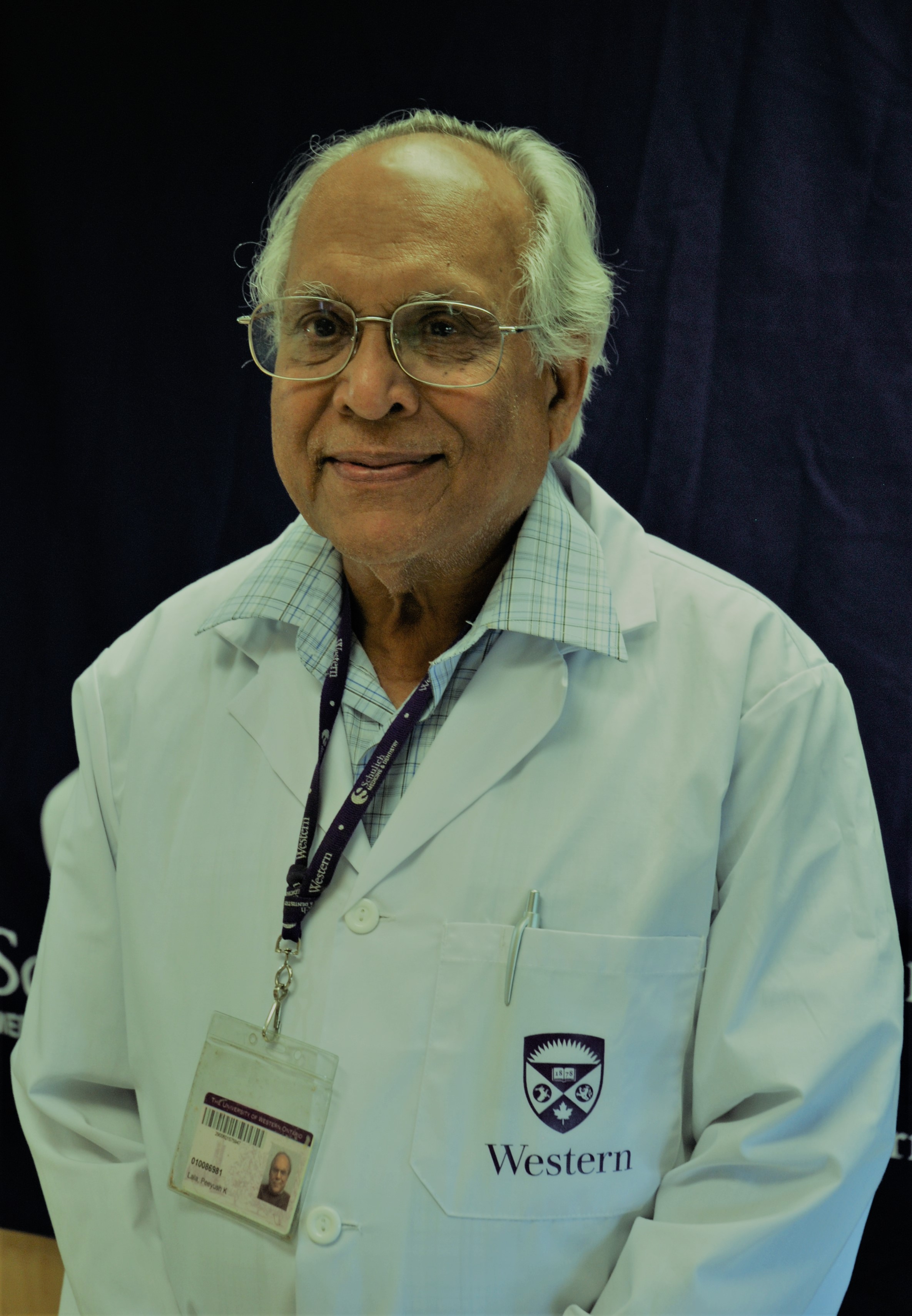
Peeyush Lala, MD, PhD, DSc (honoris causa), is known for his pioneering research of the placenta, as well as bridging the studies of reproduction and cancer. In 2020, Lala was awarded the AAA Henry Gray Scientific Achievement Award. He is professor-emeritus at the Department of Anatomy and Cell Biology in the Schulich School of Medicine & Dentistry at Western University in London, Ontario, Canada.
The Henry Gray Award “is one of the laurels which gives me the pleasure of being recognized by my own association as one of the top most leaders in the field,” Lala said. “At the same time, the award does not belong to me. It belongs to so many graduate students, postdoc fellows and associates who have worked with me over the years to bring it to this stage of this recognition. … Although I’m an emeritus professor I am still an active scientist, so this award is a great boost for all of us.”
Over the decades, Lala has trained 21 postdoctorate fellows and 45 graduate students, many of whom are now successful scientists. Lala is also proud to be only the third Canadian to receive the award. “That’s a great honor,” he said.
But this extraordinary Canadian researcher almost never went into research, originally studying to become a medical doctor. Lala received bachelor’s degrees in both medicine and surgery, an MD and a PhD in medical biophysics, all from Calcutta University in India. But, as he worked on his PhD, he realized “basic research is my joy.”
After a few years teaching pathology at Calcutta University, Lala moved to the U.S. in 1963 to work at the Argonne National Laboratory. He then spent three years as an assistant professor at the University of California in San Francisco before moving to Canada, working first at Chalk River Nuclear Laboratories, then in McGill University’s Anatomy and Cell Biology Department, where he became a full professor. In 1983, he headed to Western University to chair the Department of Anatomy and Cell Biology, where he retired from teaching five years ago but continues to maintain a research lab. In 2013, Western conferred an honorary doctor of science upon Lala.
Lala became interested in the placenta while teaching anatomy at McGill. Because the placenta forms from cells from both the mother and father, Lala wondered why the woman’s body didn’t reject it. “That’s how we started,” he said. “Later on, we found that the placenta is a highly invasive tumor-like structure, but on the other hand, although it is like a tumor, it does not quite go as far as destroying the uterus. It keeps the mother healthy and baby healthy.”
That similarity led Lala to begin to study tumors themselves. He discovered some common principles that led to the understanding of how both the placenta and tumors — as foreign invaders — evade destruction by the immune system. His research led to a combination cancer therapy with hormone and arthritis drugs for advanced melanomas and kidney cancers.
His studies also led to the discovery of many molecules restraining placental invasion, including a novel predictive biomarker for preeclampsia that originates in the placenta.
For the past 15 years, Lala has focused on treatments for triple-negative breast cancer. His research team is targeting a cell receptor called EP4, developing a combination therapy to block EP4 and immune checkpoints. The treatment has stopped the spread of cancer in patient-derived xenograft mice, and Lala hopes to move into human trials in a few years.
While Lala focuses on developing cancer treatments, he is still fascinated by the organ that started it all — the placenta. Lala, who is a founding member of the International Federation of Placental Associations, pointed to two placenta “riddles” that remain: the undiscovered mechanisms that allow the body to accept the placenta and why the placenta doesn’t destroy the uterus.
“The placenta is an organ which has been ignored, but it has all the mysteries you could discover for the whole body, even for the brain — some of the factors which are used by our brain cells were discovered first in the placenta,” he explained. “Oh yes, there is still a lot to learn on the placenta.”